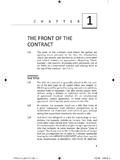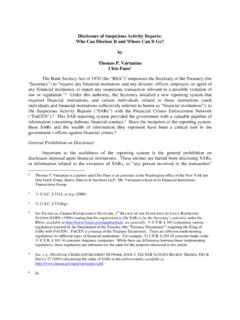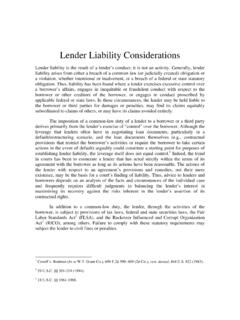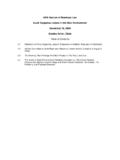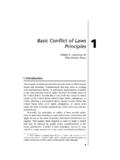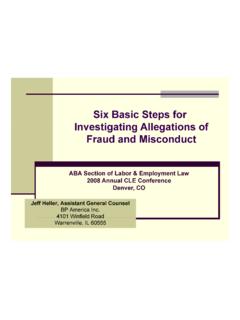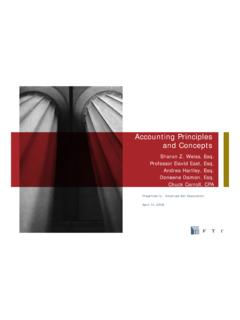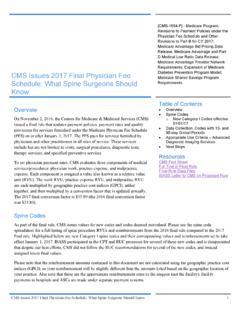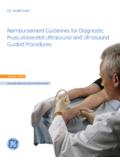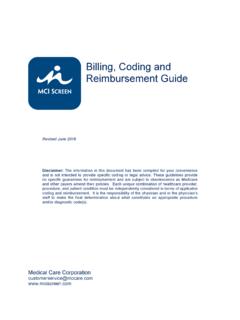Transcription of The Family Medical Leave Act Overview
1 The Family Medical Leave Act Overview By Tracy A. Cinocca A general rule in many states is that an employment contract is terminable-at-will, which means that either the employer or the employee has the right to terminate the employment at any time for any reason or no reason at all, without liability to the other for doing so. The Family Medical Leave Act ( FMLA ) modifies this rule in that covered employers may not terminate a person who provides notice of a need for Leave that qualifies under the FMLA. As a general rule, an employee is not entitled to recover for lost time where there is no agreement to that effect, or where the contract of employment allows compensation only for the days the employee works. 30 Employer Employee 135 (2005). Likewise, as a general rule an employee is not entitled to recover for lost time when there is no agreement to that effect either.
2 30 Employer-Employee 135. Similarly, the FMLA provides for unpaid Leave and the restoration of the employee on Leave to his position, if he is still able. It applies to an employer with fifty or more employees at a given location, or an employer who has granted employees such right in an employment manual. State and federally defined exceptions to the employment-at-will doctrine and include the statutory mandates of the FMLA. The Family and Medical Leave Act entitles employees to a total of twelve (12) workweeks of Leave during any twelve (12) month period for Medical reasons, for the birth or adoption of a child, and for the care of a child, spouse or parent who has a serious health condition. The Leave granted may consist of unpaid Leave , and if an employers provides paid Leave for fewer than twelve (12) workweeks, the additional weeks of Leave necessary to attain the twelve (12) workweeks of Leave may be provided without compensation.
3 30 Employer Employee 135. An eligible employee who takes Leave under the FMLA, is entitled to be restored to the same or an equivalent position upon returning from Leave . But, to be entitled to be restored to his or her former position, the employee must be able to perform the essential functions of that position. Id. Some common questions by employers about the FMLA are answered as follows: 1. Who is an eligible employee? One who has worked at least 1250 hours in a year at a worksite with at least fifty people in a 75-mile radius. 29 2611(2). 2. Who is an employer subject to the act? Any person in an industry affecting commerce who employs fifty or more others for each workday for twenty or more weeks. It includes individuals acting in the interest of an employer as well as public agencies. 29 2611(4), 2617. 3. What is a person? Does that mean me individually? The FMLA within its text does not say.
4 It references 29 203(a) that defines a person as, an individual, partnership, association, 2corporation, business trust, legal representative, or any organized group of persons. See also 29 2611(8). The majority view is that individual liability does not exist, but there is a split on the issue. 190 fed 491, 2(b). Furthermore, the Secretary of Labor regulations have upheld individual liability. 29 (d). 4. What is a spouse absent an official marriage license? The FMLA simply states, a husband or wife. What a husband or wife is depends on the laws in your state and could include common law marriages. 5. What is a serious health condition? Does an employee or their Family member qualify? This is an area of high litigation and significant case law interpretation. However, the statute states it is a physical or mental condition that involves in patient care or continuing treatment, in sum.
5 29 2611(11). 6. What Leave must an employer provide an eligible employee under the FMLA? An employee may ask for twelve (12) work weeks of unpaid Leave in any twelve (12) month period for the birth or adoption of a child or if they have or a direct Family member has a serious health condition. An employee s health condition must be serious enough that he or she is unable to perform the functions of his or her position. 29 2612(a)(1). FMLA Leave requests for a new child must be continuous. However, FMLA Leave requests pursuant to serious Medical conditions may be taken intermittently or affected through a reduced Leave schedule. When this is foreseeable, the employer may require such employee to transfer temporarily to an available alternative position at equal pay and benefits that may better accommodate the schedule.
6 29 2612(b)(2). One of the most contested areas of litigation involves what constitutes a serious health condition as contemplated for Leave . An employer may request certification of the conditions from a health care provider Certification provided under subsection (a) of this section shall be sufficient if it states (1) the date on which the serious health condition commenced; (2) the probable duration of the condition; (3) the appropriate Medical facts within the knowledge of the health care provider regarding the condition; (4) a statement that the eligible employee is needed to care for the son, daughter, spouse, or parent and an estimate of the amount of time that such employee is needed to 3care for the son, daughter, spouse, or parent; or a statement that the employee is unable to perform the functions of the position of the employee, as applicable; (5) in the case Leave on a reduced Leave schedule, for planned Medical treatment, the dates on which such treatment is expected to be given and the duration of such treatment or in the case of certification for intermittent Leave , a statement of the Medical necessity for the intermittent Leave , and the expected duration of the intermittent Leave ; and/or in the case of certification for intermittent Leave , a statement that the employee's intermittent Leave is necessary for the care of the son, daughter, parent, or spouse who has a serious health condition, or will assist in their recovery, and the expected duration and schedule of the intermittent Leave .
7 29 2613(b)." A heavily contested area in litigation concerns whether the serious health condition described by the physician or health care provider actually makes the employee unable to perform the functions of the job. A health care provider may be required to certify that it does. 29 2613(B). However, a great deal of problems can arise in this area. An employer may require at its own expense a second opinion from a health care provider not regularly employed by the employer. 29 2613(c). If the two opinions conflict, the employer may require and pay the expense for a third opinion from a mutually accepted provider whose opinion shall be final and binding. 29 2613(d). An employer may even require subsequent recertification a reasonable basis. 19 1613(e). An employer must restore an employee on FMLA to Leave to his or her position or an equivalent one with equal pay and benefits, yet need not allow benefits or seniority to accrue during the absence.
8 29 2614. Generally, an employer may not fire an eligible employee or have them restored to a position that is lesser than the one held before Leave commenced. However, in the event a denial of restoration is necessary to prevent substantial and grievous economic injury to the operations of the employer, the employer should advise the employee and allow the opportunity to return. 29 2614(b)(1). Employers are encouraged to adopt more generous Leave policies, FMLA rights may not be abrogated, and the FMLA will not trump state and federal antidiscrimination laws. 29 2651-53. An employee with violated FMLA rights may have an interference claim or a retaliation claim. Interference Claims. A Plaintiff must prove an FMLA violation by a preponderance of the evidence. EDC ANAFED 32:75, 4 (May 2006). To do so, Plaintiff simply proves his or her entitlement to the benefit and that the employer denied the exercise of that entitlement or interfered with it.
9 Id. In order to establish the prima facie elements of an Interference Claim, the following elements must be shown: 1. Claimant was an eligible employee under the FMLA; 2. The Defendant is an employer as defined under the FMLA; 3. The Claimant was entitled to the FMLA Leave ; 4. Notice of Claimant s intention to take Leave was given the employer; and 45. The Claimant was denied a benefit to which he or she was entitled under the FMLA. 29 2915(a)(1). An employer s intent in an Interference Claim is immaterial. However, if the employer can show it would have terminated the employee requesting FMLA Leave anyway, the employee may be dismissed. Bones v. Honeywell Intern, Inc., 366 869 (10th Cir. 2004). Retaliation Claims. A Plaintiff must prove his or her Retaliation claim. To establish an FMLA retaliation claim, a Plaintiff must show: 1. He or she engaged in statutorily protected conduct; 2. He or she suffered an adverse employment action; and 3.
10 There is a causal connection between the two. EDC ANAFED 32:75, 2 (May 2006). If a Plaintiff makes this prima facie showing for a Retaliation Claim, then the employer must come forward with a legitimate lawful reason for the adverse employment action. EDC ANAFED 32:75, 1 (May 2006). If it is shown through direct evidence that FMLA Leave was a substantial factor in a termination decision, then the employer must show it is more likely than not it would have terminated the Plaintiff even had it not considered the FMLA Leave . Id. at 2-3. A request for FMLA Leave does not shelter an employee from complying with a company s absence policy. Bones v. Honeywell Intern, Inc., 366 869 (10th Cir. 2004). Generally, a close temporal proximity between the employee s protected conduct and the adverse employment action is sufficient circumstantial evidence to create a genuine issue of material fact of a causal connection.

